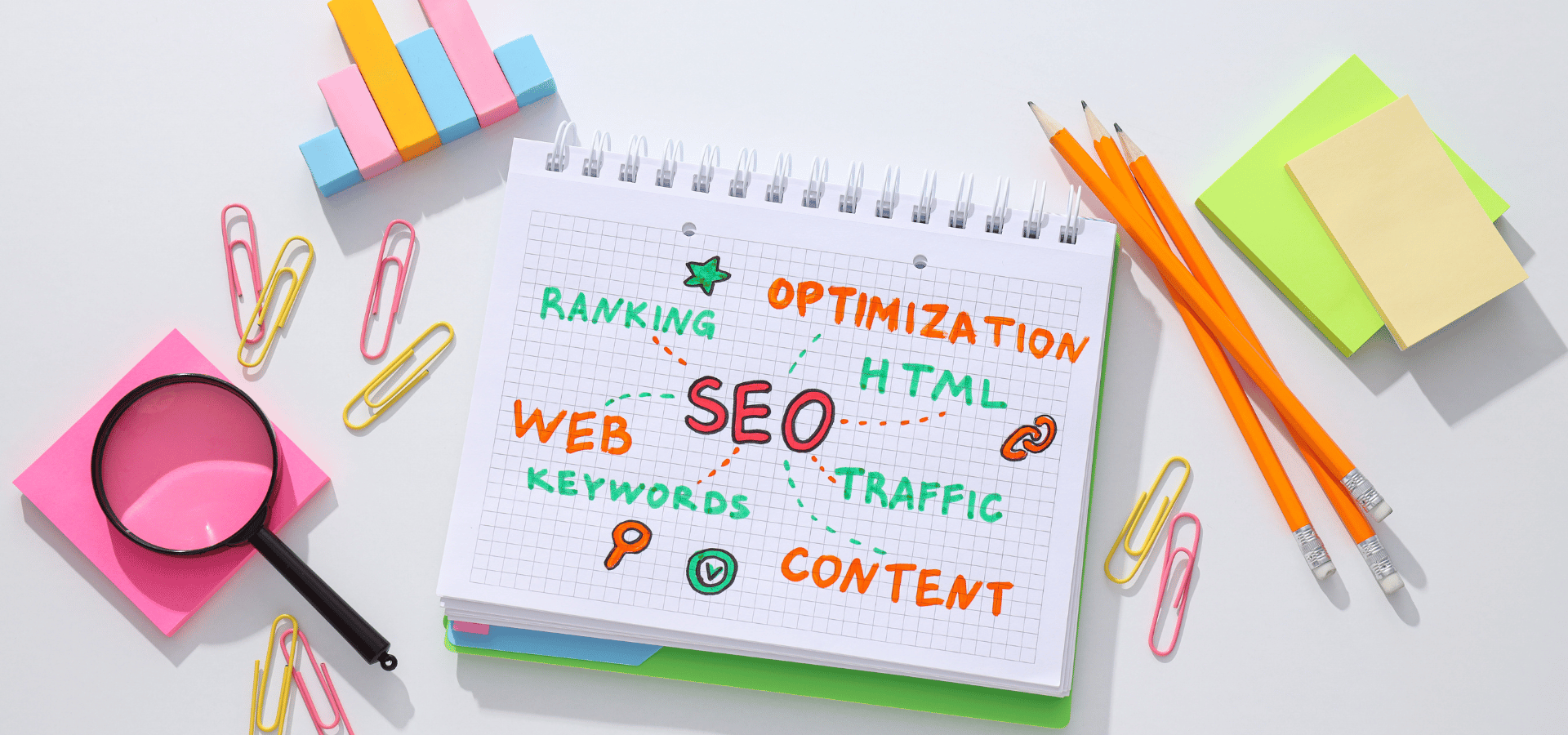As search engines increasingly rely on AI-powered search to deliver to an AI-inclined audience, your SEO strategy must keep pace to chase down this shift and master the details.
What’s even more important is to move beyond the theoretical and dive deep into the specifics and actionables, with continuous experimentation and intelligent shifts an integral part of the entire process.
Navigating this new terrain is, of course, daunting to most, so we checked in with the veterans in the field to see if they could help us find our way through.
Thanks to our BoostMyDomain community, we have a list of effective (and tried and tested) SEO tactics and techniques to optimize content for AI-powered search engines.
Read on!
Effectively Use Headings and Subheadings
One of the most effective SEO tactics for optimizing content for AI-powered search engines is the effective use of headings and subheadings.
Headings play a vital role in structuring your content and making it easier for AI algorithms to understand. AI-powered search engines prioritize well-organized, easily navigable content, as this enhances user experience and ensures relevance.
By using descriptive, keyword-rich headings, you help AI identify the most critical sections of your content, increasing its chances of being featured in AI-generated results like snippets and summaries.
Key Benefits:
- Enhanced Content Clarity: Headings provide clear signposts that guide AI in interpreting the structure and hierarchy of your information.
- Increased Relevance: Properly crafted headings align with user search intent, making it easier for AI to match your content to queries.
- Higher Visibility: Structured content is more likely to appear in featured snippets, summaries, or direct AI responses.
Implementation Tips:
- Use descriptive and keyword-optimized headings to highlight the topic of each section.
- Follow a logical hierarchy (H1 for main titles, H2 for subtopics, H3 for finer details).
- Focus on user queries by crafting headings that directly answer common questions.
- Keep headings concise and readable to maintain engagement.
- Avoid overloading with keywords—ensure headings remain natural and user-friendly.
By mastering the use of headings, you enhance the readability and relevance of your content, ensuring it ranks well and stands out in AI-powered search results.

Manoj Sharma
SEO Executive, Hicentrik
Focus on Context and Intent
The most effective SEO tactic for AI-powered search engines?
Context and intent.
It’s not just about keywords anymore – it’s about creating content that answers the deeper question behind the search.
AI is all about understanding nuance, so your content has to be crystal clear, valuable, and hyper-relevant.
Here’s the move: focus on structured data and make sure your content is scannable – use headers, bullet points, and direct answers.
AI tools like ChatGPT and Bard pull info based on clarity and utility, so if your content is messy, you’re out.
And don’t overthink it.
The game hasn’t changed; it’s evolved.
Great content always wins – it’s just that now you need to format it for how AI reads. Be fast, be specific, and above all, deliver value. That’s how you win in an AI-driven world.

Victor André Enselmann
Founder, Modeva
Integrate Natural Language Processing Techniques
The most effective SEO tactic I’ve used to optimize content for AI-powered search engines is integrating Natural Language Processing (NLP) techniques like sentiment analysis.
AI systems prioritize content that aligns with user intent and emotional tone, making sentiment optimization a game-changer for improving visibility.
For example, when writing blog posts or product descriptions, analyzing the mood helps ensure the tone matches what the audience wants, whether that’s to get them excited about a new tech product or reassure them about a health issue.
I believe that if we do this, our material will always rank higher in AI-generated answers because it answers the more complex questions users ask.
This makes the material more visible and trustworthy, since it appears to be relevant to their real needs.

Filip Dimitrijevski
Business Development Manager, CLICKVISION BPO
Utilize Topical Mapping Structure
n today’s dynamic digital landscape, crafting content optimized for AI-powered search engines is a critical factor for maximizing visibility.
At Careers In Government (CIG), we’ve achieved significant success attracting top public sector talent through our data-driven SEO strategy.
One particularly effective tactic involves our topical mapping structure.
This framework involves meticulously categorizing content by theme, ensuring a comprehensive and interconnected web of information. This allows AI search engines to not only grasp the individual value of each piece of content, but also understand the relationship between content clusters within a broader subject area.
Our focus on the “Social Media Strategies for Government Recruitment” category resulted in a 25% increase in organic traffic from targeted keywords within that specific theme.
Additionally, our content within this category frequently ranks on the first page of search results for relevant terms like “government jobs social media marketing” and “public sector recruitment Facebook strategies.”
For organizations seeking to optimize their content for AI search engines, we recommend starting with a business projection analysis.
Partnering with the right SEO experts can provide valuable insights into projected traffic and keyword rankings for various content categories. This data-driven approach ensures you’re prioritizing the areas with the highest potential return on investment.
By implementing a strategic SEO approach that leverages topical mapping and data-driven category selection, you can significantly enhance the discoverability of your content within AI-powered search engines.

Michael Hurwitz
President/Co-Founder, Careers in Government
Focus on Semantic SEO and FAQs
To optimize content for AI-powered search engines effectively, focusing on Semantic SEO is crucial.
By targeting related keywords and ensuring the content thoroughly addresses the user intent, you increase its relevance for AI algorithms. Pairing this with proper content structuring using headings not only enhances readability but also helps AI understand the content hierarchy better.
Additionally, including FAQs within the content and implementing FAQ Page Schema can significantly improve the chances of appearing in AI-generated snippets or featured results. This tactic aligns perfectly with AI’s preference for providing concise, actionable information to users.
Together, these strategies ensure that your content is both highly relevant and easily digestible for AI-powered search engines, boosting its visibility and impact. Let me know if you’d like further insights or details!

Harsh Johri
Search Engine Optimizer, Huptech Web
Utilize Schema Markup and Long-Tail Keywords
To optimize content for AI-powered search engines and ensure visibility in AI-generated results, one of the most effective tactics is to utilize schema markup.
Schema markup enhances the way search engines read and interpret your content, providing context that helps improve indexing and relevance.
By implementing structured data, you make it easier for AI algorithms to understand the relationships between different pieces of information on your site, which can lead to better rankings and increased chances of appearing in rich snippets.
Additionally, focusing on long-tail keywords is crucial. These specific phrases often align more closely with how users naturally speak or type their queries, particularly when using voice search or AI assistants.
Creating high-quality content that addresses these long-tail keywords not only improves SEO but also meets user intent more effectively.
Incorporating granular analytics allows you to monitor performance closely and adjust strategies based on real-time data. This approach ensures that your content remains relevant and optimized for evolving search algorithms.
By combining these techniques, you can enhance your content’s visibility in AI-driven search results while building a more robust SEO strategy.

Sheraz Ali
Founder & CEO, HARO Links Builder
Ensure Content is Relevant and Valuable
It sounds overly simplistic, but make sure your content is both relevant and valuable to your audience.
So much content I see getting put out is what the company wants to talk about, not necessarily what the audience wants to consume.
Well-structured, classically optimized content will continue to do well in SXO and SEO. Still, more and more, AI knows how to find credible, valuable content from authoritative sources.
Ensure your content strategy follows the classic optimization rules, but it must also meet the “who cares” standard and 100% deliver value.

Cynthia Wakeford
CMO, EdPost
Focus on Context and User Intent
The most effective SEO tactic for optimizing content for AI-powered search engines is focusing on context and user intent.
AI-driven engines prioritize content that provides clear, concise answers, directly addressing what users are searching for.
Structured data, such as schema markup, plays a vital role in helping AI understand the context of your content, ensuring it’s interpreted correctly.
Additionally, crafting content that answers specific questions succinctly—often through direct answers or bullet points—increases the likelihood of your content appearing in AI-generated results, like Google’s AI overviews.

Chris Raulf
Founder & President, Boulder SEO Marketing
Optimize for Bing and Use Videos
Right now, Bing is the search engine that powers OpenAI’s (ChatGPT Search).
Optimizing your website for Bing can now be beneficial. We SEOs neglected Bing for a long time but now need to focus on it.
For Google’s AI overviews (also good for ChatGPT), I focus on videos – videos seem to be heavily cited as additional resources.
It’s also a great user experience for people to click through, rather than an article that provides the information in the AI overview.

Sascha Hoffmann
Lifecycle Marketing Consultant, SH Media
Use Voice Search Optimization Techniques
The best way to optimize SEO for AI-powered search engines is to think about the way people use them.
Many people use AI search engines now that are voice-powered, such as AI assistants on their phone. They also tend to be more conversational when searching through AI tools.
We’ve used voice search optimization techniques with great success when it comes to SEO for AI.
This optimization technique combined with a focus on more natural language has helped our clients show up in AI-generated results.
The BoostMyDomain team thanks these experts and leaders for taking the time to share their valuable insights on SEO tactics and techniques effective in optimizing content for AI-powered search engines.
BoostMyDomain invites you to share your insights and contribute to our authoritative publication. Reach a wider audience, build your credibility, and establish yourself as a thought leader in an industry that caters to every business with an online presence!

